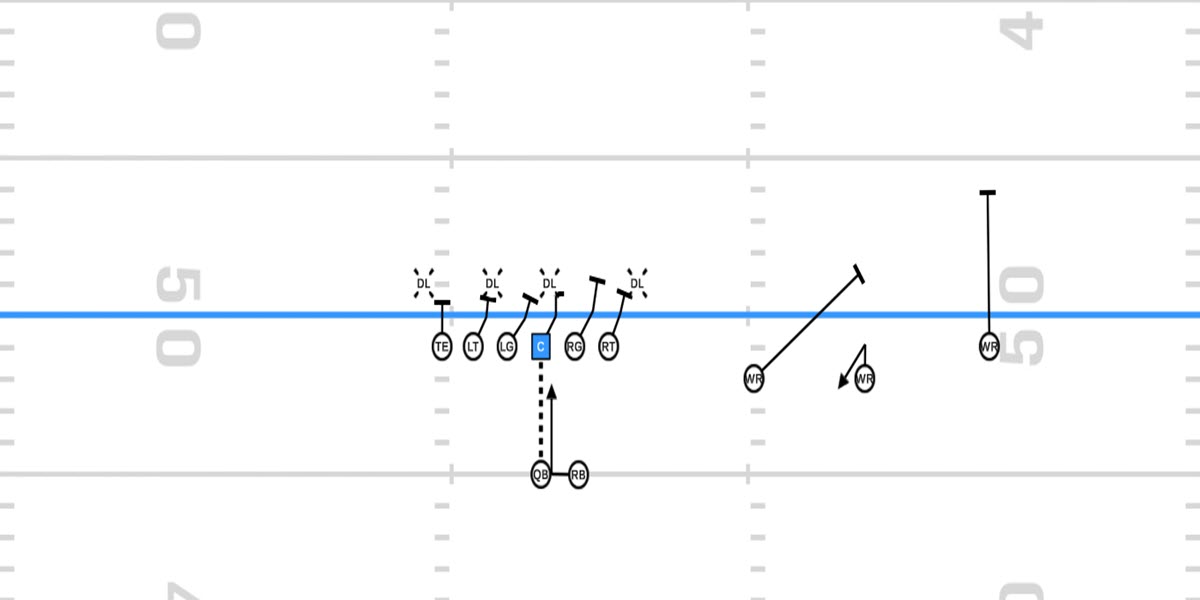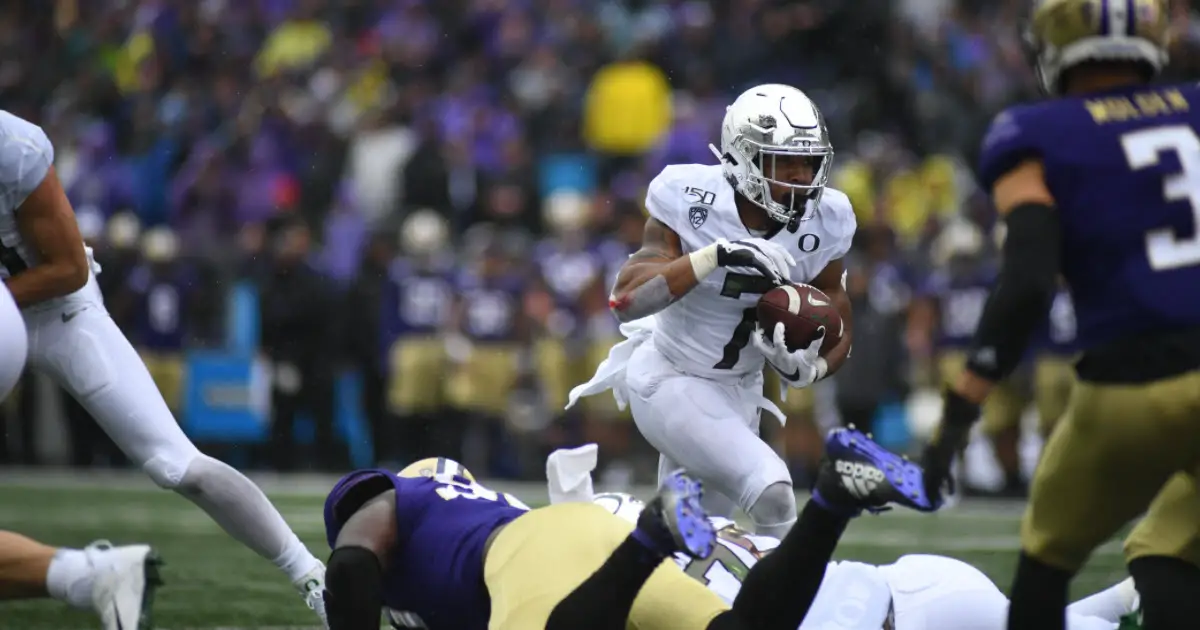Prior to the 2020 football season it was unclear whether there would be any games played at all. The lack of clarity and the restrictions placed on practice once a season was confirmed, made the install of a brand new offense all that more difficult. Coach Joe Moorhead was tasked with implementing his RPO-heavy offense through Zoom meetings and a handful of in-person practices ahead of the season opening. All things considered, the Oregon Ducks offense was efficient in many areas.
Now that Coach Moorhead has had an entire spring, and will have an entire fall camp, more of his offense is expected to show up in 2021. The scheme is shaping up to be a good mix of the Pistol formation favored by Coach Mario Cristobal and the Shotgun that Oregon fans are more accustomed to. One of the disadvantages of the Shotgun is that its alignment has been known to tip off which direction a run play would be going. This has forced offensive coaches to create constraint plays, including Coach Moorhead.

The Oregon Ducks Dive
One of the new constraint plays utilized by the Oregon offensive coordinator is a same side Inside Zone scheme. Because that can be a mouthful, I will refer to this as the new Dive play going forward. The Dive play gives the Oregon offense the ability to run the Inside Zone in either direction without having to flip the running back, and in turn tipping off the defense. Like the majority of Coach Moorhead’s run plays, it falls firmly into the RPO camp. (Run-Pass-Option)
The play is blocked exactly like the standard Inside Zone. If an offensive lineman is covered up by a defender, he is going to block that defender. (An offensive lineman is considered covered if he has a man head up on him or shaded to either side) If the lineman is uncovered, he will step to the next playside gap and either help a line-mate with a double team or climb to the second level and get the linebacker.
The running back’s aiming point is the same as the Inside Zone, though his path getting there is slightly different. Instead of crossing the quarterbacks face, he will take a jab step toward the quarterback and go downhill, aiming at the playside guard’s inside leg. Based on how the blocks express themselves, the RB can either press that frontside A-gap or look for the cutback.
What makes this Dive a constraint play off the Inside Zone, is how with the Inside Zone, the running back is targeting the A-Gap on the opposite side of where he lined up, whereas with the Dive, the RB is targeting the A-Gap on the same side he lined up. Hence the RB path and blocking match, thus defenses cannot “know” for certain which A-Gap Oregon is attacking by where the running back lines up.
In the clip above from the Spring Game, you’ll notice that there is a screen attached to the run, making it an RPO. Because of the way that Coach Moorhead tags pass concepts to his runs, the “now” screen pass option isn’t always the second choice for the quarterback in this play. The Ducks are able to attach any of their RPO concepts to any run in the playbook. This allows the offense to have a lot of variety in play selection while keeping things simple.
The two plays used in tandem makes preparation all the more difficult for defenses, and yet you sense so much more of the Joe Moorhead offense will be unveiled this season. Fun for us to watch for, and a headache for the conference defensive coordinators!
Coach Eric Boles
Newark, Ohio
Top Photo Credit: Truong Nguyen
Eric resides in Central Ohio, just outside the capital city of Columbus. He is a former offensive assistant and return game coordinator for the Ohio State – Newark/Central Ohio Technical College Titans football program.
He is an OSU-N graduate, having completed a Bachelor of Arts program in psychology.

